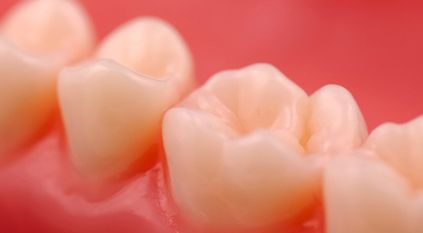White Filling

What is a White Filling?
For those with dental work who like to talk, laugh or smile, a silver tooth filling shows the world where we could have taken better care of our teeth. But what if there was a way to hide the fact that you even had any cavities in the first place?
A composite filling is a tooth-colored plastic and glass mixture used to restore decayed teeth. Composites are also used for cosmetic improvements of the smile by changing the color of the teeth or reshaping disfigured teeth.
The Makeup of a Tooth
The external part of the tooth is called the enamel, which is arguably the hardest natural material produced by animals. It consists of very closely knit calcium crystals and contains no living tissue. Dental porcelains easily and efficiently imitate the enamel part of a tooth.
The inner part of a tooth is the dentin, which is more porous and similar to bone. It consists of microscopic tubes of collagen with calcium crystal deposits. Dentin is living and very sensitive. Feeling in the dentin is transmitted through the pulp, or nerve tissues, in the very center of the tooth. To mimic the natural dentin in the teeth, today’s dental composite resins are common in non-amalgam fillings. These composites are made of a plastic resin and silica filler.
What are the advantages of white fillings?
Aesthetics are the main advantage of composites, since we can blend shades to create a color nearly identical to that of the actual tooth. Composites bond to the tooth to support the remaining tooth structure, which helps to prevent breakage and insulate the tooth from excessive temperature changes. They require very little tooth structure to be removed for placement which preserves more of your natural tooth bonded to your tooth so they won’t fall out.
What are the disadvantages?
After receiving a composite, a patient may experience postoperative sensitivity. Also, the shade of the composite can change slightly if the patient drinks tea, coffee or other staining foods. The dentist can put a clear plastic coating over the composite to prevent the color from changing if a patient is particularly concerned about tooth color. Composites tend to wear out sooner than silver fillings in larger cavities, although they hold up as well in small cavities.










